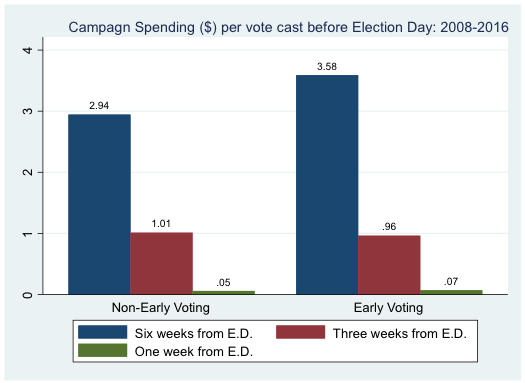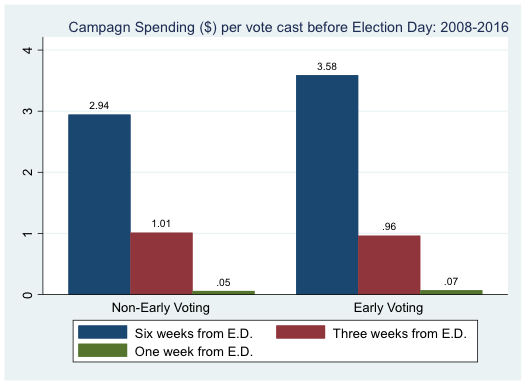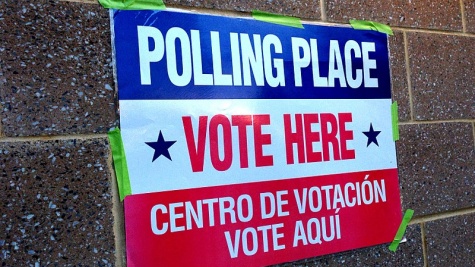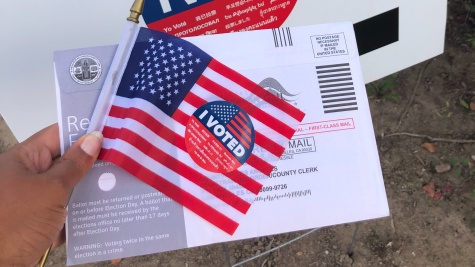Who Votes When — and Why?
Electoral Context, Mode of Voting, and Turnout
The MIT Election Data and Science Lab helps highlight new research and interesting ideas in election science. Brian Hamel, Jan Leighley, Marvin McNeese, and Robert Stein recently presented a paper at the 2018 annual meeting of the Midwest Political Science Association entitled, “Who Votes When — and Why? Electoral Context, Mode of Voting and Turnout.” Here, they summarize some of their analysis from that paper.
Americans are afforded a wide range of options for when, where, and how they cast their ballots. In most places, they can still vote in-person on Election Day at their neighborhood polling place. Increasingly, they can vote in-person before Election Day, or use the mail. Although the purpose of offering more voting modes is often to increase turnout, scholarly studies suggest that these alternative modes have modest effects on turnout at best.
Why doesn’t giving voters more choices about how to cast their ballots increase turnout — and, indeed, possibly suppress it?
Readers interested in learning more about the puzzling relationship between introducing new voting modes and turnout may also find research by Richey, Larocca and Klemanski, and Burden et al interesting.
Analysis
In our research, we suggest that part of the reason is that campaigns shift their outreach activities to reflect the voting modes available to voters. When a state adds early in-person voting, for instance, campaigns expend less effort trying to turn out voters on Election Day, but shift their efforts to deliver voters to early-voting centers.
This is evident in the different patterns of campaign spending in states with and without in-person early voting. To establish this point, we obtained data on campaign spending, and the timing of that spending, from the Federal Election Commission. To focus on voter mobilization, we limited our analysis to spending by House and Senate campaign committees during the two months preceding the November general election.
Here, we show our descriptive findings on campaign spending and vote mode. The graph below reports campaign spending per vote cast over the six weeks preceding Election Day in counties with and without in-person early voting. In states without early voting an average of $2.94 (per vote) is spent in the sixth week before Election Day. This is in contrast with $3.58 (per vote) spent in state with early voting.
In our paper, we go on to calculate the correlation between the amount of money spent on congressional campaigns six weeks before Election Day and the percentage of voters who cast ballots during the early voting period. As expected, spending in the last weeks before Election Day has a significant and positive effect on the share of votes cast in-person before Election Day, and a significant and negative effect on the share of votes cast on Election Day itself. The amount of early spending shows no significant effect on the share of the vote cast absentee by mail.
In this post, we have focused on the part of our analysis that relates to campaign activity and the use of convenience voting modes. The full paper also takes on the question about whether voters habituate to a particular mode, which the constraints of space don’t allow us to explore here. Suffice it to say that we find evidence that voters tend to habituate in the use of particular voting modes in similar elections, but not necessarily in consecutive elections. (For instance, voters tend to be consistent in the mode they use from one presidential election to the next presidential election, but less consistent from a presidential election to the next midterm election.)
More broadly, our preliminary evidence about citizens’ use of pre-Election Day voting options provides some insight as to whether convenience voting reforms are effective in increasing voter turnout or increasing the representativeness of voters. Our contribution is to show that the effects of these reforms reflect whether candidates and parties incorporate them into their campaign spending strategies. When candidates spend more money pre-Election Day, more citizens vote early. But these spending efforts come at the cost of decreased turnout on Election Day. It is thus not surprising that introducing the option of early voting does not increase turnout overall, and thus does not enhance the representativeness of voters.
We thank the MIT Election Data and Science Lab for funding this research. We are also grateful to Matt Curley, Paul Graham, and Paul Westcott at L2 for their assistance with the voter files. Brian Hamel acknowledges the National Science Foundation Graduate Research Fellowship program for its support.





